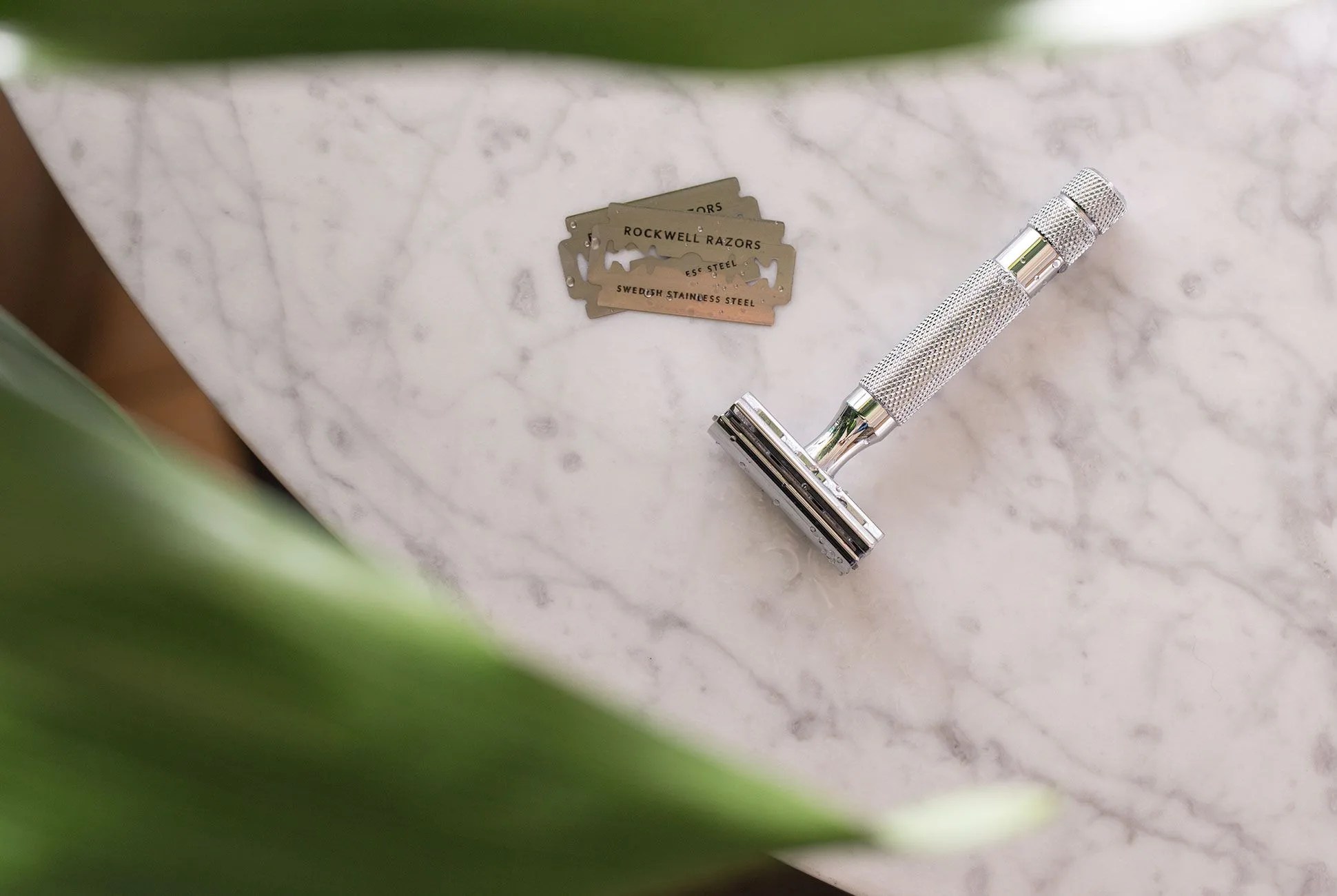Claim: There is a better way to shave than with a cartridge razor. After testing out a safety razor for the past two months, I can say with great confidence: there is a better way to shave. Now that that’s established, let’s get exegetical.
“There is” relates to my two-month test of a safety razor versus conventional cartridge razors. This testing window proved to be two-part: the learning curve and the proficiency. Cartridge razors are more straightforward to use. And to make the switch, you have to know you’ll nick yourself up a bit. But if you buy into the process, take a teeny bit more time to dial your shaving routine, and give yourself the grace to try three or more shaves with Mr. Safety, there are benefits to be had.
If you buy into the process and take a teeny bit more time to dial your shaving routine, there are benefits to be had.
“Better” is subjective, and needs a proper conditional statement. In this case, I mean both the quality of the shave experience and the quality of the shave. Note: I don’t mean the convenience of the shave nor the convenience of the utensil (though I’ve found those both to be comparable between safety and cartridge). What I do mean is that the safety razor creates a superb shaving experience — weight in hand, weight of razor head, tradition of shaving, reduction of guilt for blade waste — and, it creates a superb shave — closeness to skin, lower irritation to skin, convenience in cleaning, and frequency of blade replacement.
“To shave” here refers to the daily or second-day or after-a-week-of-not-shaving routine of shaving a male face. It also refers to shaving a male face with thick, full hair growth, at different growth intervals. My testing demonstrated that after a short learning period, the shaving process, from day-of growth (24 hours) to short-term beard (10 days), the safety razor made short work of all hair levels. Also notable: the adjustability of the 6S Rockwell razor with which I shaved also catered to the length of the shave, and once I got a hand on proper routes around the face to stick with hair directionality (shave “with the grain”) with the beginner “1” size, I became adept at moving between sizes based on stubble length.
A safety razor is less irritating to one’s skin (one blade), less expensive ($0.10 a blade, which can be used for a full week, or more), and more environmentally friendly (the steel blades can be recycled).
“Than” refers to the comparison between a safety razor and cartridge razor. This does not include straight-blade razors or other types of razors, and is a comparison most directly between a Gillette Mach 3 razor, the Dollar Shave Club 4X razor (which I’ve always found cumbersome) and the Rockwell safety razor. Those are the limitations of my trial, but the general idea is that a safety razor is less irritating to one’s skin (one blade), less expensive ($0.10 a blade, which can be used for a full week, or more), and more environmentally friendly (the steel blades can be recycled). I like all three of the above, and it always felt like a stick in the eye to pay $10 for a six-pack of razor cartridges that will decompose in a trash pile only over the course of the next millennia. For cost and environmental reasons alone, there’s an argument to go safety.

